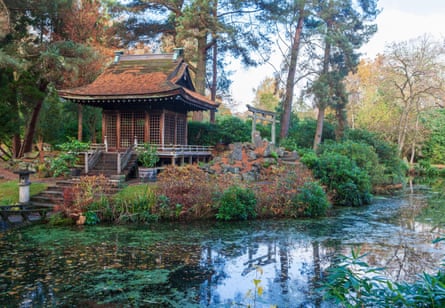Where tourists seldom tread, part 3: five towns with hidden histories | Heritage
Heritage tourism should be about crisis and decay as well as conservation. As Michael Symmons Roberts and Paul Farley write in Edgelands, their psycho-geographical field guide, “England … offers the world’s most mature post-industrial terrain.”
We were first to turn the engines on, and the lights out. It’s a pity we don’t make more out of our working-class ghost past. In many countries, regions are packaged to curious visitors through trails typically themed around wine or a foodstuff or a path taken by invading forces or someone notable. Where is the UK’s textile trail, its cider-making highway, its salt road and its coal circuit? The towns below, scintillating on their own terms, also serve as access points to the hidden histories of contemporary Britain.
Accrington, Lancashire

Britain is full of places familiar to most only by name. Accrington’s is memorable because it sounds abrupt, cod-northern. Even football non-fans know of Accrington Stanley because of a TV milk advert that played on the idea that the club, and by association Accrington, was obscure to the point of improbable.
Yet it’s a solid enough place, with a trio of buildings at its heart that hint at a golden age. The neoclassical town hall opened in 1858 as assembly rooms for Victorian networkers and was known as the Peel Institution – after calico-printing magnate Parsley Peel, grandfather of prime minister Robert Peel. Next door is the Market Hall, built in the same austere ashlar, but with an upbeat Renaissance-style facade. On the pedestrianised piazza are stone plaques celebrating the “Famous From Accrington”. Ron Hill was a “Runner and Textile Innovator”, who won marathon gold medals at the European Championships in 1969 and the 1970 Commonwealth Games. He ran every day of his life from 20 December 1964 until 31 January 2017, clocking up 52 years and 39 days and 162,442.5 miles.
Around the corner is the town’s third noble edifice: a Carnegie library, with a beautiful art nouveau stained-glass window by Liverpool artist Henry Gustave Hiller over a sweeping staircase. On a wall on the ground floor I found a display of photographs and memorabilia celebrating the centennial of Hill’s running club, Clayton-le-Moors Harriers. There he was again, alongside funeral notices from 2021.
Tall chimneys loomed, and seemed to spy, as I walked up and down sloping rows of terrace houses. Some were gritstone, others redbrick. Accrington makes Nori bricks, the hardest in the world – Nori is iron backwards – used in the foundations of Blackpool Tower and the Empire State building. The alleyways and shingle paths with their rain-puddles reminded me of the 70s, when I was a child, and unenclosed wasteland was liberating. Some streets are cobbled – the classical composer Harrison Birtwistle, who grew up here, said clogs clattering on cobblestones were the first sounds he heard.
The most handsome street, a boulevard really, is Avenue Parade, which climbs west to Peel Park and a wooded area called The Coppice. I didn’t get far up when I met dozens of runners coming down. Many wore the Clayton-le-Moors Harriers white and orange vest. The scene of mud, sweat and cheers was like something from another era. It is a raw, honest, quite beautiful thing, the human body pitted against hills. In industrial Accrington, fell running was a scarper from factories and foundries, mills and mines, shop jobs and small rooms, to the vistas and cleaner, clearer air. Every runner was a celebrant, a memorial.
Things to see
Haworth Art Gallery, Oak Hill Park, Peel Park & The Coppice
Knutsford, Cheshire

Named after King Canute, on a river named Lily, the model for Elizabeth Gaskell’s Cranford, and for Shanghai in Spielberg’s film of JG Ballard’s Empire of the Sun, Knutsford is mind-blowingly interesting.
It was a place I tried to arrive at time and again as a teenager on night walks; it signified deep Cheshire, a verdant, vague nowhere, but also, at 19 miles from home, a stride too far.
I suffer from a small, niggling Cestrian conflict, rooted in childhood: I was born in a Lancashire village called Burtonwood on the Cheshire border. In 1974, Merseyside was created, and Burtonwood – and me – were hoofed out of Lancashire into Cheshire. I was bussed to a secondary school in the new county. I was being asked to swap coal mining for salt mining, pit villages for twee hamlets, a rich past for a bland present.
Knutsford – along with Altrincham, Macclesfield, Nantwich and Tarporley –…
Read More: Where tourists seldom tread, part 3: five towns with hidden histories | Heritage

